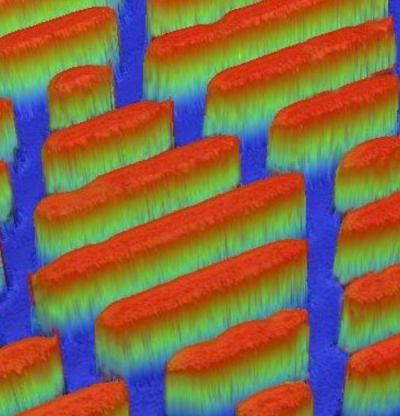Shark Skin-Like Wallpaper Highly Effective In Preventing MRSA Superbug Growth On Hospital Surfaces

Sharks are responsible for a number of contributions to human society, from the Jaws franchise to the much anticipated Shark Week. However, sharks are more known for their habit of taking lives rather than saving them, until now. Scientists have developed a material modeled after shark skin, which they hope can help reduce the spread of bacteria in hospitals.
As any avid Animal Planet fan will know, shark skin has a texture similar to sandpaper. This is because of the tiny rides and grooves that reduce friction and help the shark move super-fast through the water. According to a recent press release, this same “bumpy” design that allows sharks to steamline through the ocean is also perfect in preventing the growth of bacteria — something researchers hope could help to stop the spread of disease-causing bacteria.
To test this theory, researchers from Sharklet Technologies compared the appropriately named Sharklet material with both an ordinary smooth surface and copper surface after exposing both to a mechanical germ-filled sneeze. The study’s results showed Sharklet contained 94 percent less MRSA bacteria than the smooth surface and could potentially be used to help hospitals prevent the spread of ever-evolving superbugs.

The problem with these superbugs, such as MRSA is that they have grown resistant to antibiotics so attempting to kill the bacteria is useless. Sharklet is so effective because rather than working to kill the bacteria, it instead prevents the bacteria from attaching to the surface, keeping the surface virtually uncontaminated. “Shark skin itself is not an antimicrobial surface, rather it seems highly adapted to resist attachment of living organisms, such as algae and barnacles," study researcher Ethan Mann, a research scientist at Sharklet Technologies, which makes the material, further explained in a the press release.
MRSA is a nasty infection that appears as red, swollen, and painful boils over various areas of the body. It is spread by either skin to skin contact or touching a contaminated object. The infection first surfaced in hospitals, but quickly different varieties of the bacteria began infecting individuals in non-hospital settings. Its immunity to antibiotics makes MRSA incredibly difficult to treat, which is why prevention methods have recently become so important.
Unfortunately, the Sharklet can only go so far in protecting patients against contracting MRSA and other unpleased infections. Dr. Ambreen Khalil, an infectious disease specialist at Staten Island University Hospital, expressed to LiveScience her reservations on labeling Sharklet as the answer to hospitals' superbug situation. Khalil explained how if a doctor forgets to wash her hands before treating a patient, Sharklet surface “is not going to help.” Still, the material is proven to prevent bacteria colonization, and for this reason it’s sparking a great deal of public attention. Don’t be surprised if when you visit your local hospital you find its walls covered in faux shark skin.
Source: Mann EE, Manna D, Mettetal MR, et al. Surface micropattern limits bacterial contamination. Antimicrobial Resistance & Infection Control. 2014.



























